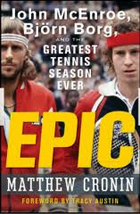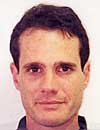Rafael Nadal:
Changes Coming in 2012?
Matt Cronin

Just four days after he led Spain to its third Davis Cup title in the past four years, No. 2 Rafael Nadal tweeted that he was back on the practice court with his uncle and coach Toni, working on his backhand.
That news might have been surprising to some given that most normal players would have wanted at least a week off after an 11 month season to rest his aching bones, but not Nadal, who admitted back at the US Open that in order to get over on Novak Djokovic again that he needed substantial time on the practice court to improve.
Three weeks off during the off season may not be enough to accomplish that goal, but at least he was true to his word, as put his head down and try to accomplish a task that may not be Herculean, but is a job worthy of a lesser god - trying to add power and depth to a weaker wing that was the primary reason why Djokovic was able to best him in all six finals they played in 2011.
In some ways, Nadal is a freak of nature, able to win huge matches hour after hour, day after day, week after week, and season after season with primarily a hard-charging, defensive style.
Without question, his heavy forehand is a gigantic offensive weapon, but it was not until late 2010 that he developed a powerful enough first serve to be able to win numerous cheap points and he has never been a super aggressive return of server.
Outside of his forehand, his main strengths are his speed, his ultra steady play and his mental toughness. While Nadal has a reasonably good backhand crosscourt when he's getting depth and angle on it, his backhand down the line is nearly non-existent and he's incredibly predictable off that wing anyway.
He does pass brilliantly when he is hitting backhand passing shots, but depth does not matter when attempting passes. But since his big rivals (Djokovic, Roger Federer, Andy Murray and Juan Martin Del Potro) are for first and foremost baseliners, he has found trouble when he's landing backhands around the service line, which he consistently seemed to do most of the season.
On clay, as the world saw at Roland Garros when he once again beat Federer for the title, the slow speed of the surface allows him to catch up to more balls and play himself back into points. He also showed in taking out an in form Del Potro to clinch the Davis Cup title that he has the ability to play further inside the court, as well as mix it up, when called upon.

But with Djokovic's clear improvement with his forehand and serve and a more aggressive return, the Serbian was able to swarm the Spaniard on every surface in 2011, which is remarkable considering that Nadal had an excellent record against him entering the season.
Moreover, at least indoors at the ATP Finals, Federer showed with a renewed commitment to net play, a rediscovery of how to keenly place his first serve and his newfound willingness to take balls to his one-handed backhand on the rise, that he too could take over and finish points before Nadal got his nose into points.
That by no means guarantees that Federer will ever best Nadal at another major as he will enter 2012 with a 9-17 record against him. He has not taken him out at a Slam since 2007 Wimbledon, but what it does show is that the Swiss, under the guidance of his serve and volleying, chip and charge loving coach Paul Annacone, may have entered a new phase of his career and could be a major threat in 2012, something that seemed unlikely after he went title-less from mid-January until mid-October.

What Federer has been able to do since he won his first major at Wimbledon in 2003 is stay healthy. While he has experienced a tricky bout with mononucleosis and has also had a couple minor back injuries, it's hard to think of any other all time great outside of Bjorn Borg (who retired prematurely at the of 26) who went so long without injuries to his major body parts.
Like Djokovic, Nadal looked flat out exhausted at the ATP Finals in London, played during the last week of November. As always, both men complained of long season and without a doubt, the sport continues to confront a big problem while it tries to balance the needs of its tournaments - which do not want to be eliminated - and its top players, almost none of whom feel they get enough physical and mental breaks.
Nadal, Djokovic, Murray, Del Potro and Andy Roddick have not had the same “luck” staying healthy like Federer. Nadal always seems to be contending with knee problems; Djokovic suffered shoulder, back and wrist trouble this year; Murray has chronic wrist problems' and the big serving Roddick right shoulder now appears to be almost fried.
Federer does not play with the same physical style as the others do and often looks effortless when striking the ball. He has light feet, seems to glide about the court without crunching his knees when skidding to a stop, and also does not seem to need to put every ounce of energy into striking shots like Nadal and Djokovic do. (Click Here to watch Federer cover every inch of the court effortlessly with his forehand.)
Both those men are immensely talented and committed players, but they both win matches largely by grinding their opponents down. Nadal has won 10 majors by the age of 25 and he has to be given at least three more years to compete for Slam crowns.
Djokovic has won four by the age of 24 and with his injury history may have four more seasons as a major contender, but if you compare their playing styles to three men whose Grand Slam success was built on relentlessly working points from inside and outside the baseline - Jim Courier, Andre Agassi and Lleyton Hewitt - you'll find that only Agassi was able to have significant success past the age of 28.

Undoubtedly that was related to taking numerous months off throughout his career to soul search, rather than to work up a sweat on the practice court.
When the Australian Open kicks off in mid-January, expect Federer, who won three straight tournaments to end the season, to come in supremely confident and for Djokovic to arrive refreshed and prepared to defend his title.
And Nadal? At the very least he will be hungry again and his game will be slightly retooled because as TV analyst Leif Shiras told me back in November, the Spaniard does not believe he can afford to stay at the same level and be the king of his sport again.
"I don't think that Nadal assumes that Novak is going to slip next year, he thinks that he'll be comparable to 2011 or even better," Shiras said. "Rafa has to make the changes in order to get better. It won't be easy, but it is at simple as that."






